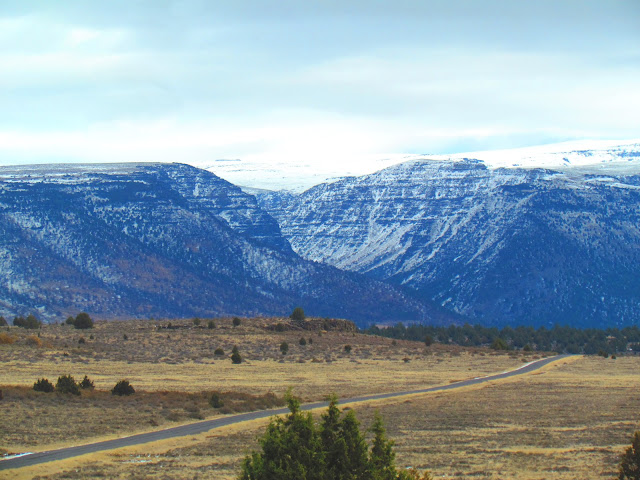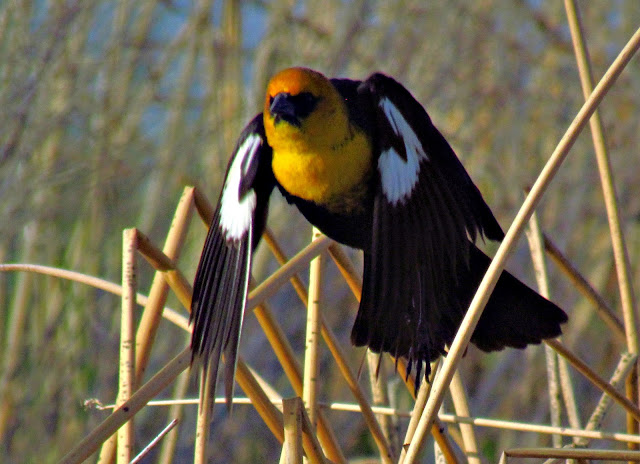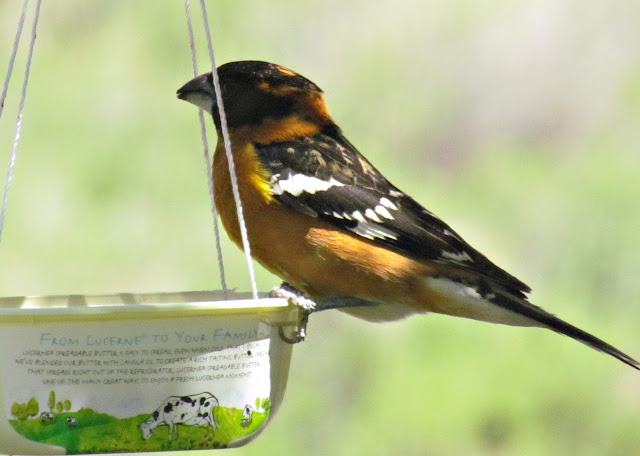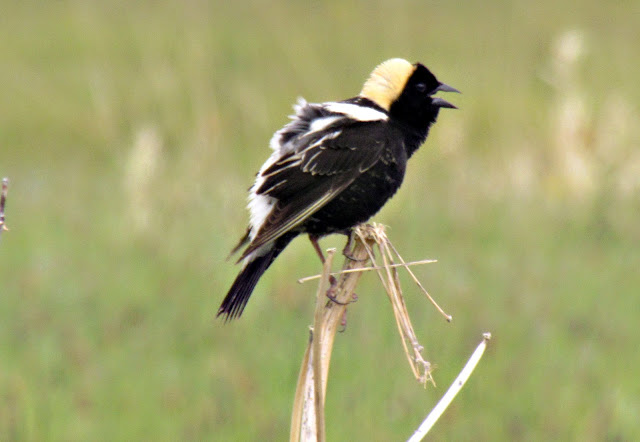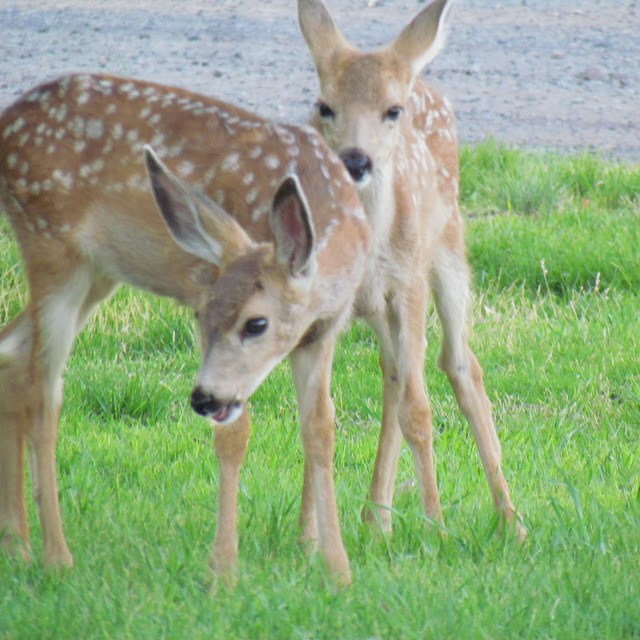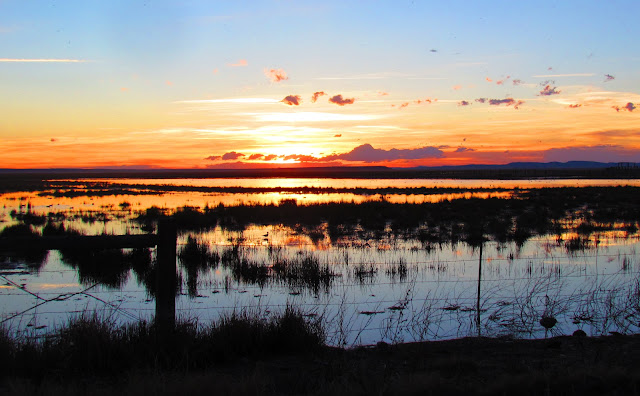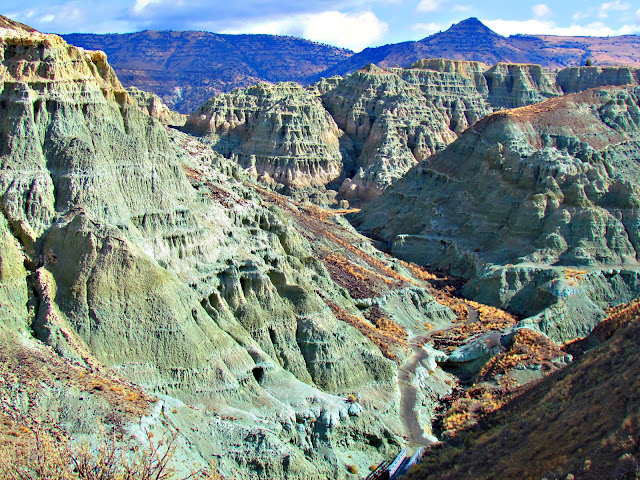There are many reasons to have a garden: to collect favorite plant species, to have a calm, happy space, to make your property more attractive, to help live a long happy life, to have a place where butterflies and birds can add their beauty, to grow the healthiest and best tasting fruits and vegetables, to help maintain plant diversity.
But today a keystone group of animals (
keystone species are necessary to preserve their ecosystems) is under severe attack, from loss of habitat, pesticides, and introduced diseases. That group is the bees. Many have gone extinct and others are severely threatened. Wild hives of honeybees may be completely gone and 35 percent of the U.S. honeybee population between 2006 and 2009 have disappeared in from the colony collapse syndrome or other causes.
There are 4000 known species of these bees in the U.S., so doing just a few changes in your garden can help many different species of bees continue their pollination jobs.
Bees evolved from wasps and with flowering plants as they changed from meat eaters to pollen and nectar eaters.And plants have evolved to become more attractive to bees and other pollinators.
Some orchids go so far as to smell and/or look like a female bee. The poor male gets a dose of pollen rather than love.
 |
| A 100 million year old bee fossil preserved in amber |
Today bees help fertilize some 250,000 flowering plants and a third of all our foods, including most of our fruits and vegetables. Without bees, most of these plants would not be able to form seeds and continue to exist. And crops such as tomatoes, peppers, eggplants which can make some fruit by wind or self pollination, need bees to be truly productive.
One area in China has already learned, too late, the importance of bees. Indiscriminate use of pesticides has eliminated their bees and they have had to resort to hand pollinating their apple trees for the last two decades.
 |
| Workers in China hand- pollinating fruit trees - all apple and pear trees have to receive this treatment |
|
|
|
Our native bees are uniquely adapted to fertilize our native plants, including members of the squash family and other new world vegetables and fruits. And bumblebees and some carpenter bees can shake the pollen out of tomatoes and other flowers by a process called sonification, allowing them to fully fertilize a flower on one visit while honey bees may take up to 7 visits to do the same job.
I'm working on a bee display, building bee houses and learning about our native bees. I'll share information on the various species with you in future posts.
But we can all begin to use our property to protect bees:
Grow plants that bees need - grow several varieties of early, mid-season, and late varieties of blooming plants of the types and colors attractive to bees. They especially love blue and yellow plants but see blue/purple nectar guides on yellow and red plants. (They don't see red but do see in the ultra violet range so flowers show up with different colors and patterns to them than to us. )
Use this general list and check with your Native Plant Society for plants native to your region. Another easy way to determine species of each genus native to your state is to use the
Lady Bird Johnson Plant Database.
Fill in the genus name, then use the "Narrow Your Search" feature on the right to enter the name of your state, before scrolling down to the search button on the bottom. You can then open each species, and scroll down to the USDA database link for that plant. This will allow you to see if the plant has been reported in your county. This allows you to use plants that naturally grow close to you.You may also find seed sources by checking out the data base of native plant suppliers in your state or region.
- Aster - Aster
- Currant - Ribes
- Elder - Sambucus
- Fireweed - Chamerion
- Goldenrod - Solidago
- Huckleberry - Vaccinium
- Larkspur - Delphinum
- Lupine - Lupinus
- Madrone - Arbutus
- Mint - Mentha
- Oregon grape - Berberis
- Pacific waterleaf - Hydrophyllum
- Penstemon - Penstemon
- Rabbit-brush - Chrysothamnus
- Rhododendron - Rhododendron
- Salmonberry - Rubus
- Saskatoon - Amalanchier
- Scorpion-weed - Phacelia
- Snowberry - Symphoricarpos
- Stonecrop - Sedum
- Wild buckwheat - Eriogonum
- Willow - Salix
- Yarrow - Achillea
And do remember that plants bred to be showy often don't offer bees pollen or nectar. Use the simple, native ones instead. Single flowers are better than doubles. Also let some of your herbs and vegetables go to flower.
Don't use pesticides. Use garlic oil and BT to control mosquitoes. Use mechanical means of pest control first. And remember that having pests is a sign of imbalance. Be sure to use organic fertilizers and things like compost teas to keep your plants unstressed and healthy so bugs won't attack them. Your soil needs to be alive, so don't kill it with chemical fertilizers. Let the living organisms in the soil naturally nourish your plants.
Provide places for bees to maintain their nurseries. Seventy percent of the native bees live in holes in the ground. Thirty percent use hollow stems or rotten wood to make tunnels.
Bumblebees live in holes made by mice and ground squirrels, old mice nests within bunch grass, hollow trees, and other cavities. So keep some ground clear of plants or mulch and keep messy dead stems and branches where you can. Provide bee houses for a neater solution.
Provide mud - if not is nearby - for your mason bees.
Provide fresh water. A birdbath works fine, just clean it every day or so.
We gardeners are entering our dreaming and planing stage as we contemplate our growing season just past and look forward to next year's gardens. While we read plant catalogs, we can also inventory what plants in our garden are useful to bees and figure out what other plants we might like to add. And this is a great time to build bee houses. I'll post about mine soon.
Another neat way you can help, and all while enjoying your garden, is to join the
Great Sunflower Project and document the bee species that visit your garden.
And finally, you can recruit more people to work to save bees. Post information on your facebook page, get fellow garden club members and other gardening friends involved, see if you can start bee projects in public spaces such as parks, fire stations, and libraries. We need to know the kinds and numbers of bees in our areas and then work to build their numbers.
These are some of the bees I've discovered on the refuge.
 |
Halictus -  |
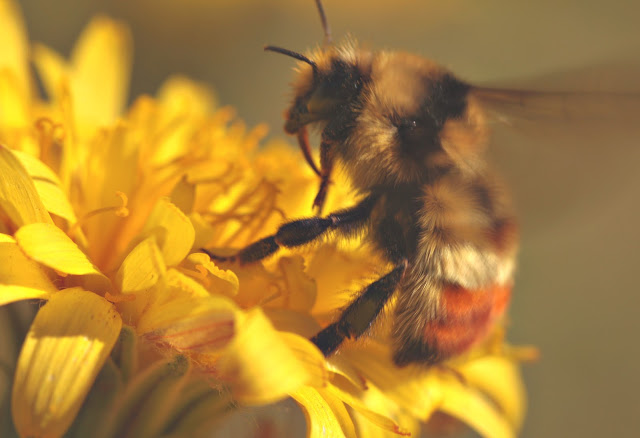 |
Bombus centralis -  |
 |
Osmia -  |
For further fascinating reading, check out some of these papers and books.
Bee Basics: An Introduction to Our Native Bees
Note:
You can download PDF files, then send them, as attachments, to your Kindle Fire address and they will show up on your Kindle as books. Very handy for these books that are free as PDFs but cost $$$ for the print version.
How to Build a Bee Garden
Tomato Pollination Graphics
Give Bees a Chance
Ten Reasons to Use Bumblebees for Pollination
A little good news: Extinct British Honey Bee Rediscovered
A Red List of Bees - shows status of some bees and shows a need for lots more research on other bee species.
Book: Attracting Native Pollinators - This is a wonderful reference and has a Kindle version.
Guide to Eastern Bumblebees
Guide to Western Bumblebees
Pollinator Syndrome Traits Table
Pesticides That Kill Bees 







